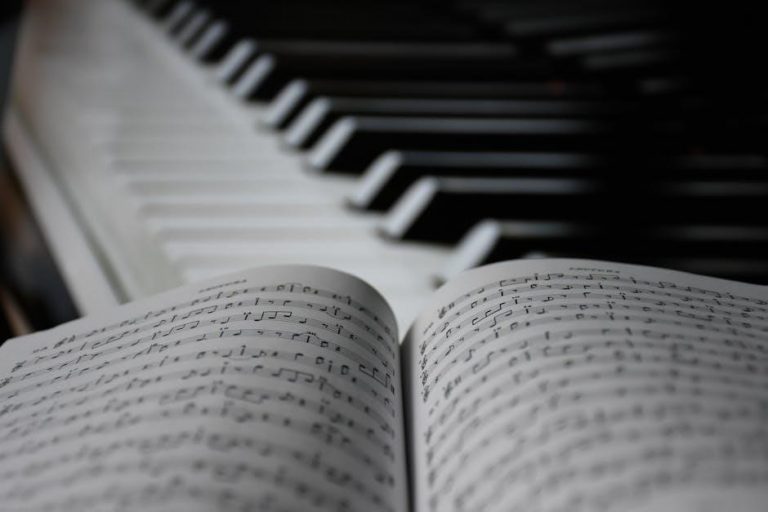Sergei Rachmaninoff’s Piano Concerto No. 2 in C minor‚ Op. 18‚ is a cornerstone of classical music‚ celebrated for its emotional depth and technical demands. Composed between 1900 and 1901‚ it reflects the composer’s personal struggles and artistic redemption. The concerto is renowned for its rich melodies‚ intricate harmonies‚ and dramatic orchestration‚ making it a favorite among pianists and audiences alike. Its sheet music is widely available‚ including free PDF downloads from IMSLP‚ ensuring accessibility for performers and enthusiasts worldwide.
Overview of the Composition
Rachmaninoff’s Piano Concerto No. 2 in C minor‚ Op. 18‚ is a three-movement concerto composed between 1900 and 1901. It is renowned for its emotional intensity‚ lyrical melodies‚ and virtuosic demands. The concerto is structured into three movements: Moderato‚ Adagio Sostenuto‚ and Allegro Scherzando‚ each showcasing Rachmaninoff’s mastery of orchestration and pianistic technique. The work reflects the composer’s personal struggles and artistic rebirth‚ with its dramatic contrasts and rich harmonic textures. The concerto is scored for solo piano and a full orchestra‚ including strings‚ woodwinds‚ brass‚ and percussion. Its sheet music‚ widely available in PDF formats‚ highlights the intricate interplay between the piano and orchestra‚ making it a cornerstone of classical repertoire. The concerto’s enduring popularity stems from its profound emotional depth and technical brilliance‚ appealing to both performers and audiences worldwide.
Historical Significance of the Concerto
Rachmaninoff’s Piano Concerto No. 2 holds a pivotal place in classical music history‚ marking the composer’s triumphant return to composition after a period of creative silence and personal turmoil. Premiered in 1901 with Rachmaninoff himself at the piano‚ the concerto was an instant success‚ solidifying his reputation as a leading figure in late Romantic music. It not only showcased his technical brilliance but also his ability to craft deeply emotional and accessible works. The concerto’s enduring popularity has made it a staple in the repertoire of pianists worldwide‚ with its sheet music widely distributed in PDF formats‚ ensuring its accessibility for future generations. Its historical significance lies in its role as a bridge between the Romantic era and the evolving musical styles of the 20th century‚ influencing countless composers and performers.
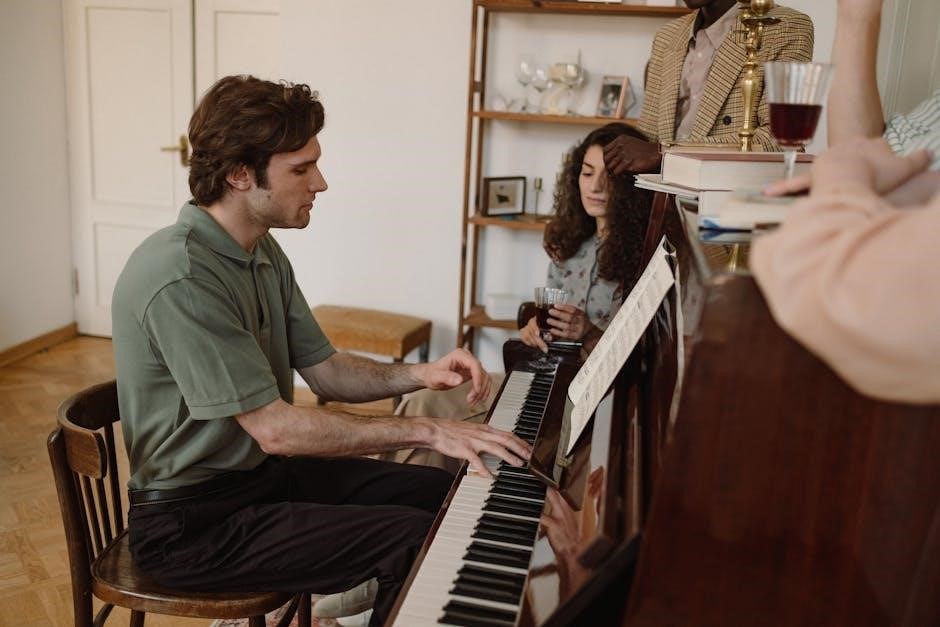
Structural Analysis of the Concerto
Rachmaninoff’s Piano Concerto No. 2 is structured in three movements: Moderato‚ Adagio Sostenuto‚ and Allegro Scherzando. Each movement showcases the composer’s mastery of emotional depth‚ technical complexity‚ and orchestral balance‚ creating a cohesive and powerful musical narrative.
First Movement: Moderato
The first movement of Rachmaninoff’s Piano Concerto No. 2‚ marked Moderato‚ is a powerful and emotionally charged opening. It begins with a dramatic orchestral introduction‚ setting a somber yet majestic tone. The piano enters with a lyrical theme that unfolds into a rich‚ intricate dialogue between the soloist and the orchestra. Structurally‚ the movement follows a sonata-like form‚ with an exposition‚ development‚ and recapitulation. The exposition presents contrasting themes‚ from the bold orchestral motif to the piano’s more introspective melody. The development section explores these themes in depth‚ building tension and emotional intensity. Technical challenges abound‚ including sweeping arpeggios and chromatic runs‚ showcasing the pianist’s virtuosity. The movement culminates in a triumphant recapitulation‚ blending the piano’s brilliance with the orchestra’s lush textures‚ creating a captivating and unforgettable experience for both performer and listener.
Second Movement: Adagio Sostenuto
The second movement of Rachmaninoff’s Piano Concerto No. 2‚ marked Adagio Sostenuto‚ is a deeply lyrical and emotionally profound section. It opens with a hauntingly beautiful melody in the piano‚ accompanied by lush orchestral textures that create a sense of introspective longing. The movement is characterized by its expressive themes‚ which alternate between moments of melancholy and fleeting glimpses of hope. The piano part is technically demanding‚ requiring precise control and nuanced phrasing to convey the music’s emotional depth. The orchestra provides a rich harmonic foundation‚ with strings and woodwinds adding layers of color and texture. This movement is particularly beloved for its ability to evoke powerful emotions‚ making it a highlight of the concerto. Sheet music for this movement is widely available‚ including free PDF downloads from sources like IMSLP‚ allowing pianists to explore its beauty firsthand.
Third Movement: Allegro Scherzando
The third movement of Rachmaninoff’s Piano Concerto No. 2‚ marked Allegro Scherzando‚ is a vibrant and dynamic conclusion to the work. Characterized by its lively tempo and playful energy‚ this movement showcases the composer’s mastery of orchestration and technical brilliance. The piano part is particularly demanding‚ with rapid arpeggios and intricate fingerings that require exceptional dexterity. The orchestra accompanies with a rich tapestry of sounds‚ creating a dramatic dialogue between the soloist and the ensemble. This movement is a testament to Rachmaninoff’s ability to blend virtuosic display with deep musicality. Sheet music for the Allegro Scherzando is widely available‚ including free PDF downloads from IMSLP‚ allowing pianists to explore its technical and artistic challenges. The movement’s scherzando character adds a layer of wit and humor‚ making it a thrilling finale to the concerto.
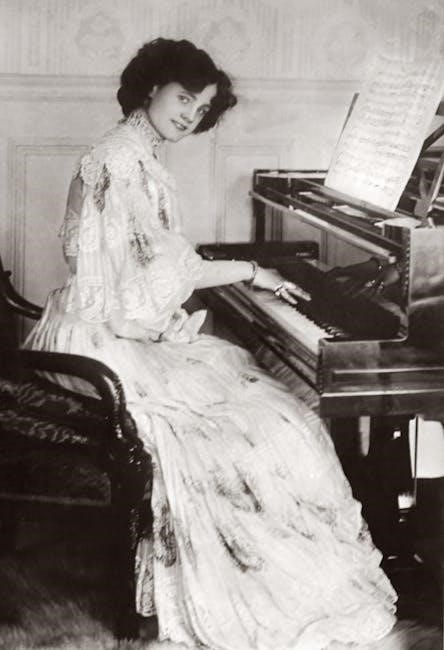
Sheet Music Availability and Sources
Rachmaninoff’s Piano Concerto No. 2 sheet music is widely available in PDF format from sources like IMSLP‚ offering free downloads‚ and commercial platforms providing high-quality scores. Arrangements for two pianos and other instruments are also accessible‚ catering to diverse performance needs and study purposes.
Free PDF Downloads from IMSLP
The International Music Score Library Project (IMSLP) provides free PDF downloads of Rachmaninoff’s Piano Concerto No. 2‚ enabling pianists and enthusiasts to access the full score and individual parts. This resource is invaluable for study‚ practice‚ and performance preparation. The PDFs are digitized from original manuscripts and published editions‚ ensuring high quality and fidelity to the composer’s intent. Additionally‚ IMSLP offers arrangements for two pianos‚ allowing for collaborative performances without the need for an orchestra. These downloads are legally available due to the concerto’s public domain status‚ making Rachmaninoff’s masterpiece accessible to a global audience. Musicians can explore not only the concerto but also related works‚ fostering a deeper connection with the composer’s oeuvre.
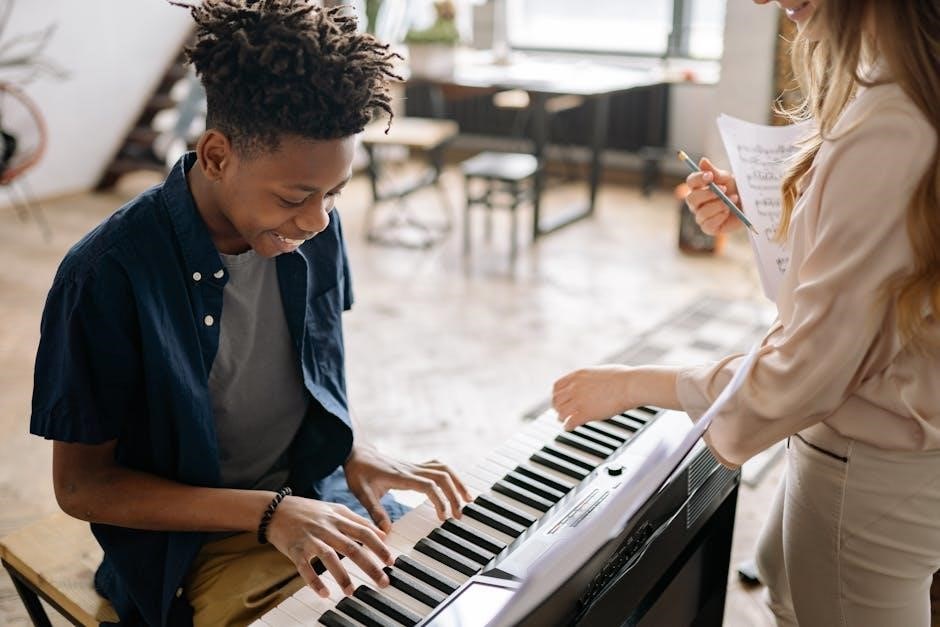
Commercial Sheet Music Options
For those seeking high-quality‚ professionally edited sheet music‚ commercial options for Rachmaninoff’s Piano Concerto No. 2 are widely available. Reputable publishers like Boosey & Hawkes‚ Dover Publications‚ and others offer beautifully printed scores‚ ensuring clarity and accuracy. These editions often include introductory notes‚ performance annotations‚ and historical context‚ enhancing the musician’s understanding and interpretation. Additionally‚ commercial sheet music frequently features spiral-bound formats‚ making it easier to handle during performances. Many editions also include piano reductions or solo parts‚ catering to both soloists and accompanists. These options are ideal for serious pianists seeking a reliable and durable copy of the concerto. Commercial sheet music can be purchased through music stores‚ online retailers like Amazon‚ or digital platforms such as Musicnotes‚ providing global accessibility to Rachmaninoff’s timeless masterpiece.
Arrangements for Two Pianos and Other Instruments
Rachmaninoff’s Piano Concerto No. 2 is available in arrangements for two pianos and other instruments‚ offering alternative perspectives on the work. The composer himself created a two-piano version‚ providing a more intimate yet equally powerful rendition. These arrangements are particularly popular among pianists who wish to perform the concerto without an orchestra. Additionally‚ transcriptions for instruments like cello‚ violin‚ and even chamber ensembles highlight the concerto’s versatility and enduring appeal. Many of these arrangements are available as free PDF downloads from sources like IMSLP‚ while others can be purchased through commercial publishers. These adaptations allow musicians to explore the concerto’s rich harmonies and melodies in diverse settings‚ making it accessible to a broader range of performers and audiences. Such arrangements are a testament to the work’s timeless beauty and adaptability in classical music.
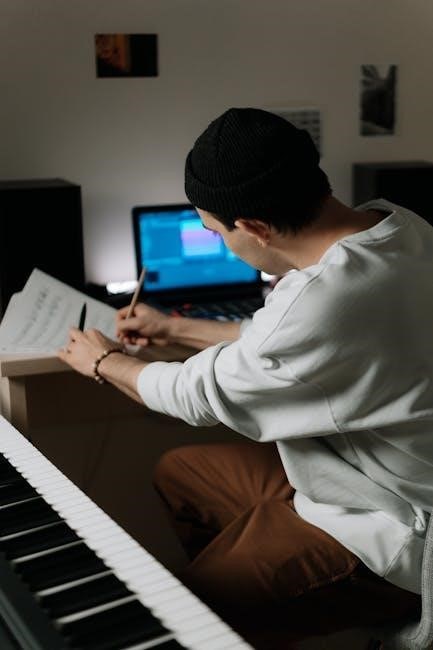
Performing the Concerto
Performing Rachmaninoff’s Piano Concerto No. 2 demands exceptional technical skill and emotional depth‚ with intricate fingerwork and nuanced phrasing essential for pianists. The orchestral accompaniment requires precise balance and coordination‚ ensuring a harmonious interplay between soloist and ensemble. Musicians must master the concerto’s dramatic contrasts‚ from the intense opening chords to the lyrical melodies‚ capturing its expressive essence. Interpretative insights and careful rehearsal are crucial to deliver a compelling performance that resonates with audiences. Proper preparation and artistic collaboration are vital to bring this monumental work to life effectively.
Technical Challenges for Pianists
Rachmaninoff’s Piano Concerto No. 2 presents formidable technical challenges‚ requiring exceptional dexterity‚ endurance‚ and musicality. The intricate fingerwork‚ vast chord spans‚ and double-thirds demand precise hand positioning and strength. The concerto’s emotional depth adds another layer of complexity‚ as pianists must balance technical brilliance with expressive sensitivity. The first movement’s dramatic octaves and chromatic passages test agility‚ while the Adagio’s lyrical melodies necessitate delicate phrasing. The Allegro Scherzando’s virtuosic demands‚ including rapid runs and complex rhythms‚ push pianists to their limits. Mastery of these challenges requires meticulous practice‚ particularly in navigating the concerto’s dynamic contrasts and nuanced phrasing. Collaborating with an orchestra further amplifies the difficulty‚ as pianists must align their interpretation with the ensemble’s performance‚ ensuring a cohesive and powerful rendition of this iconic work.
Orchestral Accompaniment Requirements
The orchestral accompaniment in Rachmaninoff’s Piano Concerto No. 2 is integral to the work’s grandeur‚ requiring a large ensemble with specific instrumentation. The score calls for piccolo‚ flutes‚ oboes‚ clarinets‚ bassoons‚ horns‚ trumpets‚ trombones‚ tuba‚ timpani‚ and strings‚ creating a rich‚ layered sound. The orchestra must balance power with subtlety‚ supporting the piano’s virtuosic solos while asserting its own voice. Conductors face the challenge of maintaining cohesion between the piano and orchestra‚ ensuring dynamic contrasts and nuanced phrasing are preserved. The interplay between soloist and ensemble is crucial‚ particularly in moments where the orchestra mirrors or amplifies the piano’s themes. Proper tuning and coordination among sections are vital to achieve the desired harmonic depth and emotional impact‚ making the orchestral accompaniment a cornerstone of the concerto’s success.
Interpretative Insights and Tips
Performing Rachmaninoff’s Piano Concerto No. 2 demands a deep understanding of its emotional and technical complexities. Pianists should focus on expressive phrasing‚ nuanced dynamics‚ and a strong sense of rubato to convey the work’s dramatic intensity. The sheet music reveals intricate fingerings and articulations that require meticulous practice. Balancing power and delicacy is crucial‚ especially in the Adagio Sostenuto movement‚ where lyrical passages must shimmer above the orchestral texture. Studying recordings of renowned performers can provide valuable insights‚ while collaborating with a conductor ensures alignment with the orchestral accompaniment. Emphasize the melodic lines and harmonic richness‚ as these define the concerto’s essence. Mastery of the piece lies in blending technical precision with heartfelt interpretation‚ allowing the performer to channel Rachmaninoff’s profound emotional depth. Ultimately‚ the goal is to deliver a performance that resonates with both technical brilliance and profound musicality.
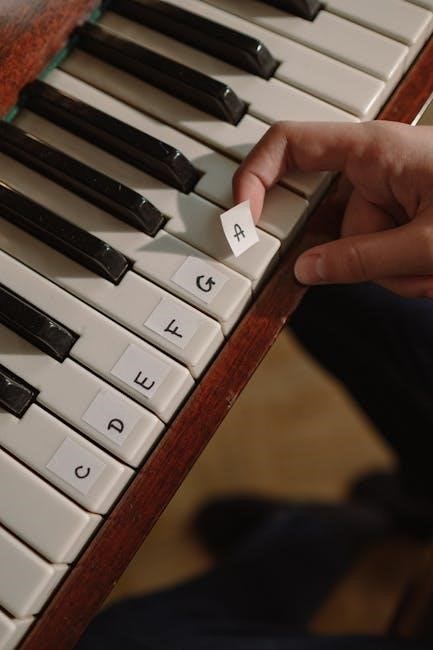
Cultural and Artistic Impact
Rachmaninoff’s Piano Concerto No. 2 is a timeless masterpiece‚ deeply influencing classical music and popular culture. Its emotional depth and technical brilliance inspire pianists and composers‚ while its melodies resonate universally‚ making it a cornerstone of artistic expression and enduring legacy.
Popularity in Classical Music Repertoire
Rachmaninoff’s Piano Concerto No. 2 holds a revered position in classical music‚ frequently performed and admired worldwide. Its compelling blend of technical complexity and emotional richness captivates audiences‚ making it a staple in concert halls. The concerto’s enduring appeal lies in its ability to convey profound feelings through its haunting melodies and dramatic orchestration. Pianists often regard it as a pinnacle of their repertoire due to its challenging yet rewarding nature. The concerto’s popularity is further evidenced by its widespread availability in sheet music‚ including free PDF downloads from IMSLP‚ allowing both professionals and enthusiasts to engage with this masterpiece. Its influence extends beyond classical circles‚ inspiring countless adaptations and interpretations across various genres‚ ensuring its timeless relevance in musical culture.
Use in Film and Media
Rachmaninoff’s Piano Concerto No. 2 has been widely featured in film‚ television‚ and media‚ showcasing its universal emotional resonance. Its haunting melodies and dramatic crescendos have been used to enhance cinematic experiences‚ such as in the 1945 film Brief Encounter and The Piano. The concerto’s Adagio sostenuto movement is particularly popular‚ appearing in films like Somewhere in Time and The Music Lovers. Its evocative qualities make it a favorite for directors seeking to convey deep emotion or romantic tension. Additionally‚ excerpts from the concerto have been used in television shows‚ commercials‚ and even video games‚ further broadening its reach. The concerto’s adaptability to visual narratives highlights its timeless appeal and ability to connect with diverse audiences. Its presence in modern media ensures its legacy endures‚ introducing the work to new generations.
Legacy of Rachmaninoff’s Compositional Style
Sergei Rachmaninoff’s Piano Concerto No. 2 has left an indelible mark on classical music‚ shaping the Romantic era’s harmonic and melodic landscapes. His compositional style‚ characterized by sweeping melodies‚ rich harmonies‚ and intricate orchestration‚ has influenced generations of composers and pianists. The concerto’s emotional depth‚ chromatic complexity‚ and technical demands reflect Rachmaninoff’s innovative approach‚ blending Russian romanticism with a symphonic grandeur. Its legacy is evident in its enduring popularity and frequent performance‚ as well as its adaptation in various arrangements‚ including two-piano versions and solo transcriptions. The availability of sheet music‚ such as the widely accessible PDFs from IMSLP‚ ensures that Rachmaninoff’s masterpiece remains a cornerstone of classical repertoire‚ inspiring both professionals and enthusiasts. His compositional style continues to resonate‚ embodying the essence of late Romanticism and cementing his place as one of history’s greatest composers.
